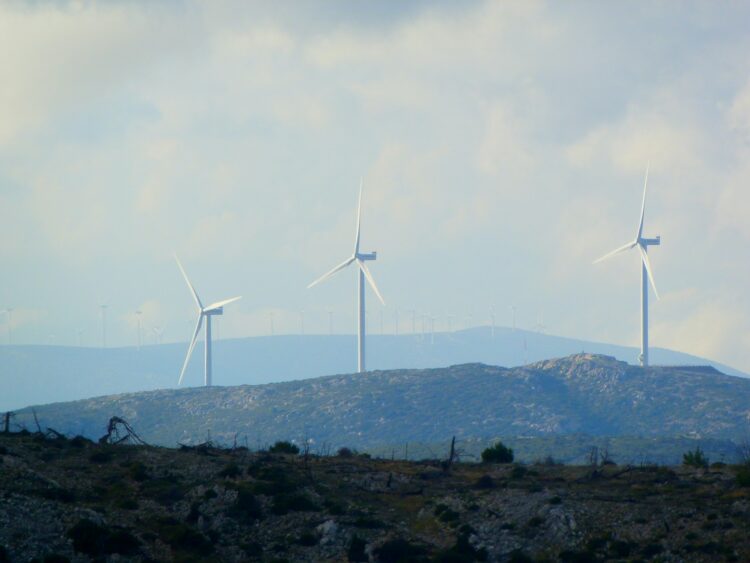Impact Investing
Why ESG Investing Practices and Rules Needed to Be Updated
The European Union updates ESG investing guidelines to enhance transparency and quality, standardizing reporting across geographical, sectoral, and structural levels. The changes include reporting financial aspects, risks, and societal impacts. Regulators aim to harmonize company information, emphasizing the importance of both financial and non-financial data. The update also addresses concerns about “greenwashing”

A few years ago, when we heard about sustainability or ESG aspects, many investors considered that we were facing a completely temporary or short-term situation. At the moment, you can see the numerous adaptations and action plans regarding sustainability that companies are carrying out.
That is why we are immersed in a long-term trend, with a very high dynamism motivated by both the client as well as the demands sent by the regulator regarding reporting, as we will see below.
Within the European regulatory maelstrom in which we find ourselves, a Non-Financial Disclosure Directive (NFRD) has been modified by a new one called CSRD (Corporate Sustainable Reporting Directive) that includes more than 1,100 requests for information and that must be start reporting for some companies (more than 500 employees and subject to the current European NFRD directive) from 2025 with data from 2024.
Read more about the new rules for ESG investing in the European Union and find the most important business news of the day with our companion app Born2Invest.
The reason why the European Union has carried out this update on ESG investing is to achieve several goals:
To improve transparency and quality through homogenization of states at different levels: geographical, sectoral and structural. Some of the aspects that must be reported after this modification will be financial aspects that were not previously included under this directive, in addition to including the opportunities, risks and impact of the business model on society. There are still 10 years until credit ratings include ESG.
These updates highlight the great interest that regulators have in trying to homogenize the information sent by different companies in Europe, and in giving similar importance to non-financial and financial information; A sign of the relevance of the data to be reported, the figure of an auditor appears who must verify the reported information and who will also be public, unlike the previous directive, which was not necessary.

Another aspect that needed an update by the Council of the European Union was the green bond regulation (EuGB) , since there were different voices about the “greenwashing” of these financial assets. With this new regulation, the funds received from these debt issues must be invested (the % will vary depending on whether the sector is covered by the taxonomy) to facilitate the transition towards sustainable activities and the issuers must indicate their transition plans at the level overall and purpose of the bonus.
In addition, homogeneous requirements have been established for the use of this European green bond terminology. In this way, we are on the right path to avoid bad practices in the debt markets in terms of sustainability. You may be interested in: Corporate governance errors have “withering” consequences
The European Securities and Markets Authority (ESMA) is proposing changes to the name of Collective Investment Institutions (CII) since to include any word related to sustainability, specific information must be reported either at the level of sustainable investments or of application of exclusions among others, so that this IIC may contain in its name some term related to ESG.
In conclusion, this article highlighted through practical/theoretical reflection the necessary advances that are being made so that this trend called “sustainability” has solid and structural pillars. They are being built appropriately, as the different members of the ESG market (regulator, investor, companies and client) are aligned with the importance of truthfulness, homogeneity and the need for sustainability over time.
__
(Featured image by Feri & Tasos via Unsplash)
DISCLAIMER: This article was written by a third party contributor and does not reflect the opinion of Born2Invest, its management, staff or its associates. Please review our disclaimer for more information.
This article may include forward-looking statements. These forward-looking statements generally are identified by the words “believe,” “project,” “estimate,” “become,” “plan,” “will,” and similar expressions. These forward-looking statements involve known and unknown risks as well as uncertainties, including those discussed in the following cautionary statements and elsewhere in this article and on this site. Although the Company may believe that its expectations are based on reasonable assumptions, the actual results that the Company may achieve may differ materially from any forward-looking statements, which reflect the opinions of the management of the Company only as of the date hereof. Additionally, please make sure to read these important disclosures.
First published in elEconomista.es. A third-party contributor translated and adapted the article from the original. In case of discrepancy, the original will prevail.
Although we made reasonable efforts to provide accurate translations, some parts may be incorrect. Born2Invest assumes no responsibility for errors, omissions or ambiguities in the translations provided on this website. Any person or entity relying on translated content does so at their own risk. Born2Invest is not responsible for losses caused by such reliance on the accuracy or reliability of translated information. If you wish to report an error or inaccuracy in the translation, we encourage you to contact us

-

 Biotech1 week ago
Biotech1 week agoCAR-T Therapies: From Breakthrough Cancer Treatment to Faster, Safer, and More Accessible Immunotherapy
-

 Fintech2 days ago
Fintech2 days agoPakistan’s Digital Finance Paradox: Growth, Fraud, and the Fight for Trust
-

 Crowdfunding2 weeks ago
Crowdfunding2 weeks agoCommunity Energies 2026: Funding Projects Combating Youth Loneliness
-

 Cannabis1 week ago
Cannabis1 week agoMedical Cannabis in Poland 2025: Growth, Stability, and Wider Access
























